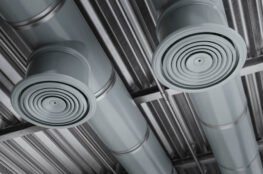Transformers play a vital role in the electrical power system, as they enable transmission and distribution at different voltage levels. The core losses (also known as iron loss) can have a significant impact on their overall efficiency, even though they are usually efficient devices. Understanding core losses is crucial for maximizing transformer performance and minimizing energy waste.
What Are Core Losses?
The core of the transformer is usually made from laminated silicon steel. The two main mechanisms that cause these losses are hysteresis and eddy-current loss.
1. Hysteresis Loss: The magnetic properties of the core material are responsible for this loss. The magnetic domains in the material realign when the magnetic field changes direction. Realignment of the magnetic domains in a material consumes energy and results in heat generation. The hysteresis losses are dependent on material properties, frequency of alternating current (AC), and peak magnetic flux density.
2. Eddy Currents Loss: Eddy currents, or loops of current, are induced in the core by changing magnetic fields. These currents flow in the opposite direction of the material grain, causing additional heat and energy losses. Laminated core designs can minimize eddy current losses by increasing resistance to currents through the introduction of air gaps between thin steel layers.
Impact on Efficiency
Transformer efficiency is directly affected by core losses. The ratio of input power to output power is expressed as a percentage. In order to get the same output with high core losses, you need to increase your input power. This reduces efficiency. Transformer efficiencies typically range between 95% and 99%. However, excessive core losses will reduce efficiency significantly. This can lead to higher operational costs.
Minimizing Core Losses
Manufacturers employ different strategies to improve transformer efficiency and reduce core loss.
1. Material Selection: High-quality core materials that have lower hysteresis losses can reduce core losses significantly. Amorphous steel and other advanced materials are becoming more popular due to their superior performance.
2. Lamination Techniques: Laminating cores reduce eddy-currents by creating a path with a higher resistance to the currents, thus minimizing losses.
3. Design Optimization: Engineers can optimize the core geometry and dimension to ensure minimal flux loss and improved magnetic performance. This will further enhance efficiency.
Transformer core losses are an important factor that affects their efficiency and operating costs. Understanding the mechanisms that cause hysteresis, eddy current and other losses can help manufacturers and operators implement strategies to minimize them. It not only increases the efficiency of transformers, but it also improves the sustainability of electrical systems through reduced energy waste and operating expenses. Anyone looking to maximize transformer performance today in an energy-conscious world should invest in design and technology improvements that reduce core losses.
This post was written by a professional at Electrical Transformer Buyers. As a premier destination for buying and selling electrical transformers, Electrical Transformer Buyers is your go-to partner in the industry. Backed by years of experience and a team of highly skilled professionals, we are committed to providing comprehensive solutions for all your electrical transformer needs. Click here to learn more!



